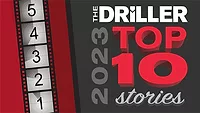Driller Recounts Project at Twin Towers Site in Wake of 9/11
Ziegenfuss Drilling Worked to Relieve Water Pressure on ‘Bathtub’ Basement
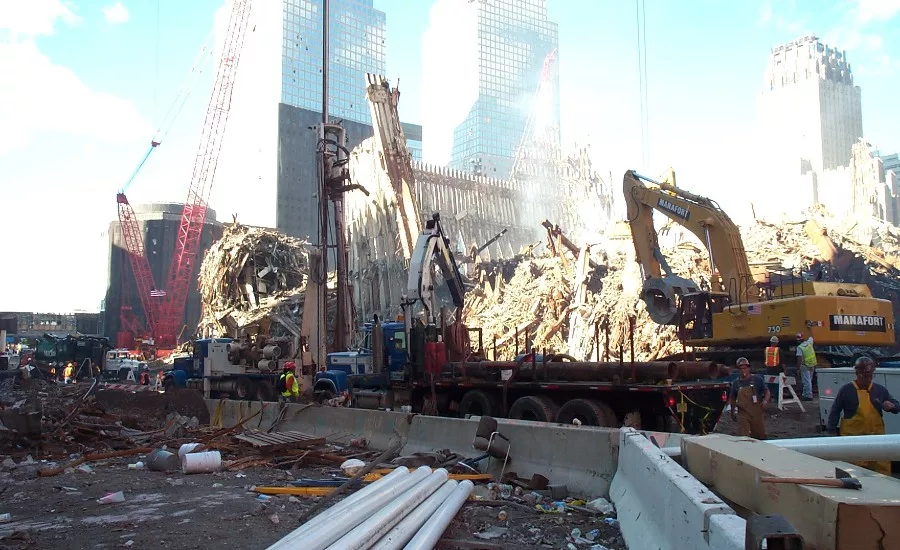
Ziegenfuss Drilling Inc. works at Ground Zero shortly after Sept. 11. Even weeks later, smoke billows from the rubble due to high temperatures lurking below the surface.
Source: Ziegenfuss Drilling Inc.
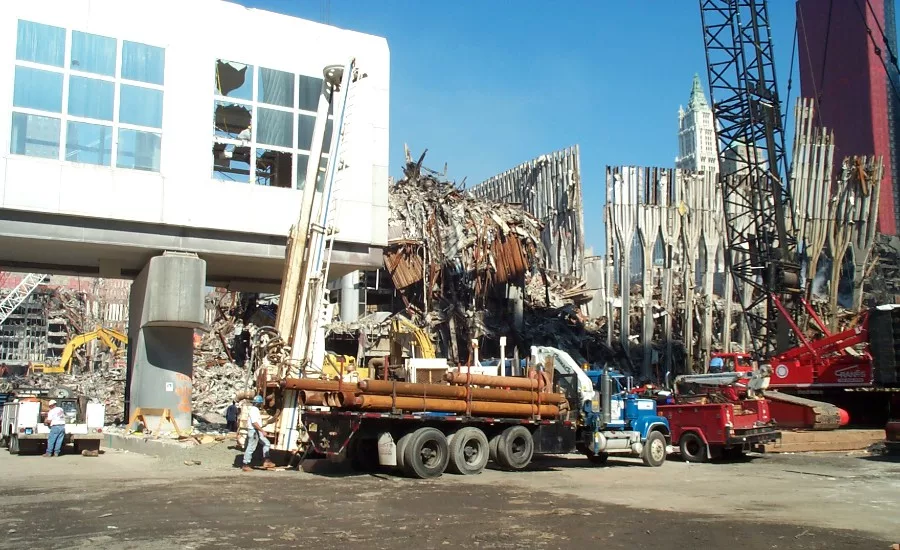
ZDI was brought in to drill holes outside the World Trade Center’s “bathtub” to relieve water pressure. There was concern about the Hudson River flooding the subway tunnels below.
Source: Ziegenfuss Drilling Inc.
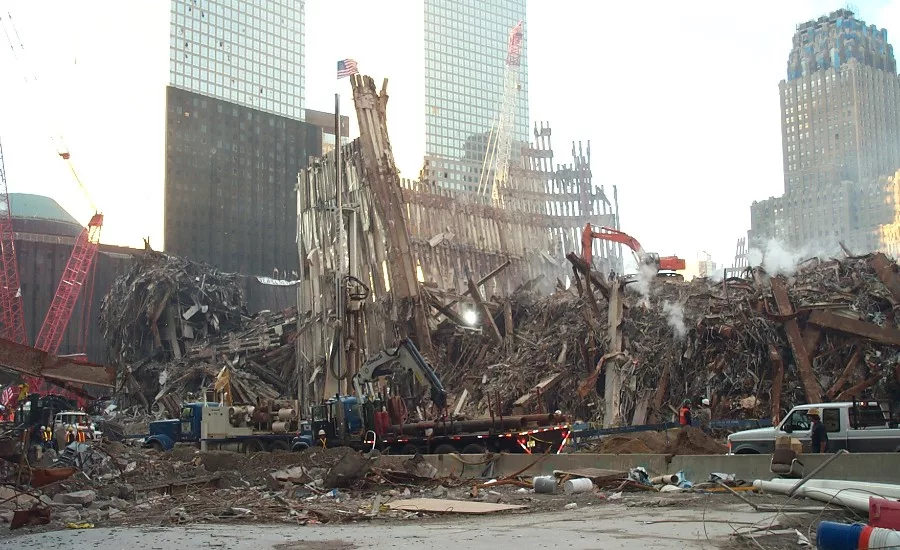
Mark Ziegenfuss says they put American flags on the masts of both drilling rigs they had on site.
Source: Ziegenfuss Drilling Inc.
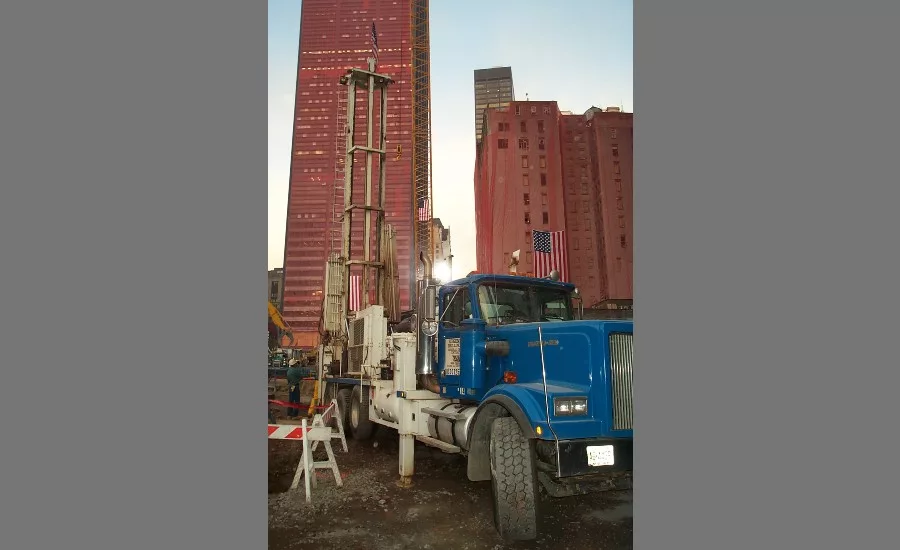
“Everybody there felt like they were doing their part as an American,” Mark Ziegenfuss says. In the background, fabric barriers protect nearby buildings from dust.
Source: Ziegenfuss Drilling Inc.
Every American remembers the unity felt in the wake of the terrorist attacks on Sept. 11, 2001, and the catastrophic events of that day. Mark Ziegenfuss, founder of Ziegenfuss Drilling Inc. of Ringoes, New Jersey, experienced that feeling first-hand at Ground Zero in the months after.
ZDI, started in 1973, does commercial water wells, foundations work, mine and tunnel projects, mostly in the East Coast of the United States, but they’ve worked in areas as far-flung as Hawaii and Yemen. The contractor, now and in 2001, has a reputation for drilling through tough materials.
Ziegenfuss says, as he looks back on that project in the fall of 2001, he’s “proud” that the company played its part in structurally securing the site.
“We are thankful for our brave employees that went to work there every day,” he says, adding that several remain with the company to this day.
“We will never forget all the heroes that lost their lives that day,” Ziegenfuss adds, “and we thank our U.S. military for their continued service to protect our country.”
The Driller spoke to Ziegenfuss as the 20th anniversary of 9/11 approaches. We wanted to hear about the company’s role, and what it meant to him and the crews on site to do that work. Our conversation has been edited for clarity.
Q. Before we get into the specifics of the work, how did you get that project? Was it a bid, networking or a call out of the blue based on your company’s reputation/expertise?
A. It wasn’t a bid. … We were the first ones asked to go there. The reason we were asked to go there was the drilling equipment that we have was kind of unique. It’s able to drill through a lot of obstructions. That’s where we got a lot of our work. They had a lot of obstructions there by the outside walls and Trade Center.
The problem was they thought the subway system was going to flood all the way up to 52nd Street.
What they wanted us to do was to drill down below the basement. They called it the “bathtub” of the World Trade Center. ... If you look at the pictures that we have, when we moved in there, there’s smoke coming up from the rubble from all the steel. When they built the building, they put the tiebacks in to hold the wall. You have the wall and, at about a 30-degree angle, you have a tieback that goes into the rocks to hold that wall up. What I didn’t know was when they put the steel inside the basement they cut the tiebacks to let the wall come in against the inside structural steel. ... When they built it, they released those tiebacks.
So now ... you have smoke coming up through the steel. We were told it was still, I believe, 2,100 degrees down at the bottom of the bathtub or basement, whichever you want to call it. What they believed was going to happen was, I believe the subway came in under the World Trade Center and [they thought] all that heat was going to collapse the concrete walls, and all the water pressure from the Hudson was going to come in. That would have been to sea level up to the surface, but the problem was they thought the subway system was going to flood all the way up to 52nd Street, which is above the Lincoln Tunnel. ...
Moretrench America had the dewatering project, and they asked us to go in and do the drilling because they knew we could get through the material there quicker than probably anyone else could. That’s how we got it.
Q. Now, the project. What was the project scope?
A. We were drilling to relieve the water pressure that was against that wall, so that they could clean the steel out and if everything caved in they didn’t get a major flood of the Hudson coming. … I believe there was probably around two dozen holes that we put around the perimeter of the basement there. They put pumps in and that would keep — all that water pressure would come into the pumps and leave the inside walls free from water.
Q. Now tell me a little bit about the the material you’re you’re going through.
A. The material that was there was whatever — back then they just backfilled with a bunch of rubble and whatever they had handy. There was no controlled backfill or anything. They just dumped whatever they had there.
Q. As far as execution, what did ZDI bring to the table in terms of rigs and other heavy equipment?
A. Back then, they were called the Barber drills. Now, they’re the Foremost DR drills. What was unique about them is they had the ability to case and drill at the same time. The casing could cut through even steel, boulders, whatever they had there. You’d have a cutting shoe on there and the casing would cut, and then the down-the-hole hammer inside would knock out the rest of the material. That’s why it was so good to drill with this machine.
Q. So, did you have one rig, a couple rigs, three or four?
A. We had two rigs in there.
Q. How long did this project take?
A. We were there from Oct. 4 through Nov. 2, about a month.
Q. Obviously, this made a big impact on you and your company. Can you talk a little bit about the emotional challenges of work in a site that, for lack of a better word, is basically a graveyard when you arrive? Was it solemn? What was the atmosphere like when you were working?
A. It’s kind of hard to describe. Everybody there felt like they were doing their part as an American. I don’t know really what else you could say. I mean, I felt that it was pretty much an honor to be asked to go there.
Q. This year marks the 20th anniversary of 9/11. What are your thoughts when you look back on your company’s part in the work there?
A. My thoughts are it was just a special thing to be a part of and I was very proud to do it.
Looking for a reprint of this article?
From high-res PDFs to custom plaques, order your copy today!


